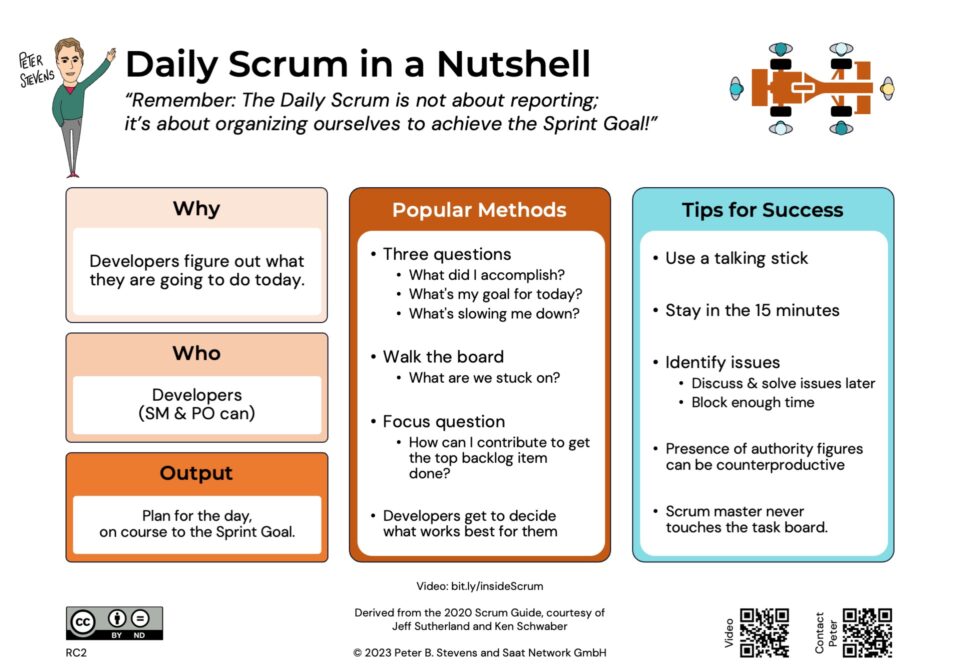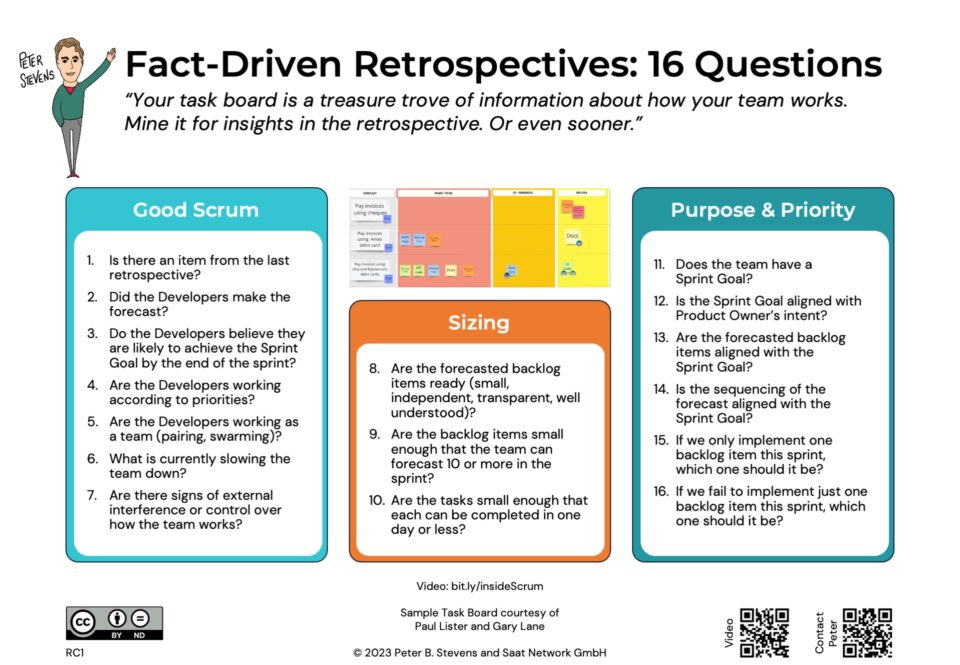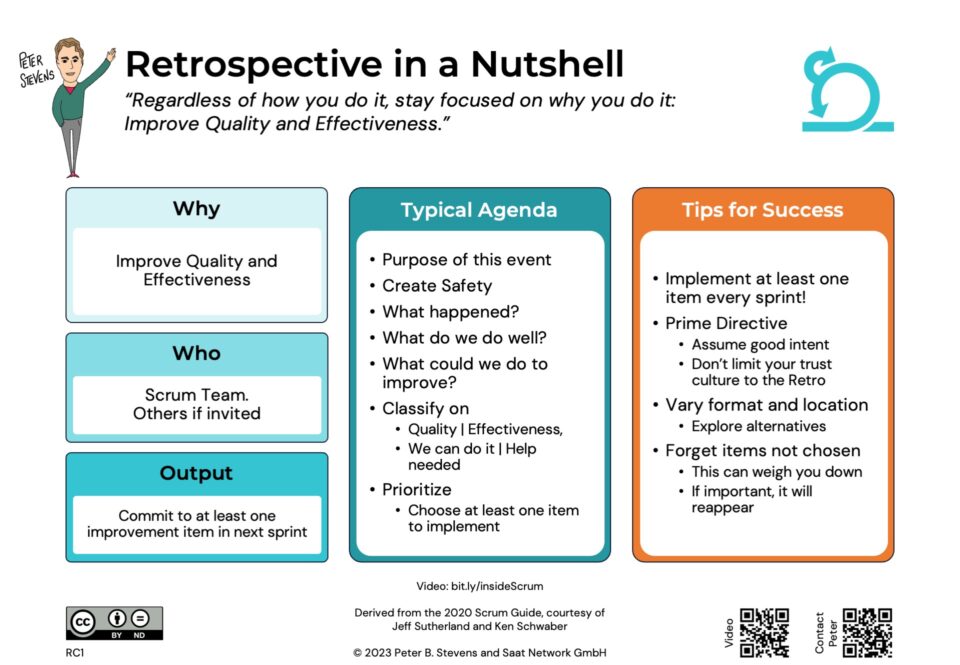How many people do you need in your team?
31-12-2014An invitation to join a learning consortium
05-01-2015… and, who would like some kind of training to help become one?
The Doctor: Am I a good man?
Clara: I don’t know. But I think you try to be and I think that’s probably the point.
The Doctor: I think you’re probably an amazing teacher.
This year, I have my second full year as a Certified Scrum Trainer behind me. Looking back, it seems the first thing that happened after becoming was a CST was getting a steady stream of requests from aspiring CSTs to co-train with them. I held off the requests until this year. I have now worked with four aspiring trainers. In each case, I learned a lot and have come to appreciate both the value and the limitations of the mentoring system. I want to create a workshop for aspiring Scrum Trainers, so that they can rapidly achieve the level of a good CST.
What does a good trainer do?
In my eyes, the purpose of a Scrum Master course is not to teach people the basic mechanics of Scrum. You can learn that from a 10 or 12 page document. The purpose is to enable the participants to discover a new, better, and more fun way of working, and leave them inspired to take that vision back to their companies to make it a reality! And they should have enough hands-on experience to have confidence and enthusiasm while getting started.
Just as Morpheus could only lead Neo to the door, but Neo had to choose to pass through, the job of a Scrum Trainer is to offer people that red pill. If what they learn resonates with them, they will want to plunge down that rabbit hole and explore it for a long time to come!
How do you train that? I believe that being a good trainer is a mixture of passion, attitude, skills and experience.
Passion
Attitude
If you teach inspect-and-adapt, you have to do inspect-and-adapt, otherwise it is not authentic. (And sooner or later, you won’t be very good, compared to others who do.)
I thought I was a pretty good trainer when I started. (Actually, I thought I was a very good trainer when I applied, which probably slowed my application tremendously.) Shortly after I started teaching certified courses, I noticed my Net Promoter Scores were not what I thought they should be. I also realized that despite collecting feedback from participants since my first course, I had never actually implemented a suggestion based on that feedback!
I wasn’t inspecting and adapting, so I resolved to start. Since that moment, I read all the feedback. After each course, I strive to implement at least one suggestion or address one issue in the next course. I also send a follow-up to my participants with a summary of their feedback, and if possible, tell them what I plan to do differently in the future thanks to their feedback.
A funny thing happened. After an initial and substantial improvement, it got harder to improve. In some cases, I even regressed. But I didn’t stop, even as I suffered some low points. Some issues were really hard to solve. I knew what the problem was, but didn’t know how to solve them, even as I heard, time after time, that I needed to do something about it.
My willingness to adapt actually made it easier for me to change when the time was ripe. By always looking at how my customers were dissatisfied, I knew what needed to be done. Sometimes it took a while, but when I saw the solution to my challenges, I was able to implement them right away! (Thank you to the trainers and co-trainers I have worked with this year: Lizzie, Hugo, Elena, Niranjan and Andreas. Each of you has helped me move forward in important ways.)
The jump in my Net Promoter Scores was immediate and has been sustainable. I don’t know if that qualifies me as a good trainer, but I am certainly better than I was two years ago, and it is the inspect-and-adapt cycle of Scrum which enabled me to get here.
How would I summarize the right attitude? A willingness to inspect, adapt and collaborate. How could you train that? Again, I think learning by doing and experiencing a-ha moments is the way to go.
Skills and experience
- embrace the Agile Mindset
- have a validated deep understanding of Scrum
- have a validated understanding of what is not Scrum
- know how to teach so people learn.
- be able to teach any relevant topic spontaneously without powerpoint
- be able to tell authentic stories about their own experience doing Scrum to illustrate key points
- understand related approaches, e.g. Kanban, Radical Management, Lean Software Development, Extreme Programming, and how they relate to Scrum
- understand effective approaches for change leadership, e.g. Leadership Storytelling, Working Agreements, and how they relate to Scrum
- understand current vs. deprecated Scrum and agile practices
- be able to work with very large groups effectively
A Scrum Alliance Certified Scrum Trainer also has had their understanding, ability to teach, and course materials validated both against the authoritative Scrum literature and the understanding of Ri-level practitioners in the community. A CST candidate should be well prepared for the Scrum Alliance TAC (Trainer Acceptance Committee) process.
Next Steps
- Have I captured the right vision for a good trainer? What’s missing? What’s excessive? What’s just wrong? Please leave a comment!
- Is there interest from aspiring Scrum Trainers for such a training? Do you know anyone who would be interested in attending some kind of workshop (webinar? combination?) to become a better Scrum Trainer or have an easier time with the TAC? If so, please share this article with them and invite them to start the conversation on my contact form.





2 Comments
Hi Scott,
Thanks for your suggestion and observations!
I think you have raised an important distinction between the requirements to become a CST and what can one actively teach an aspiring CST so that s/he becomes a good one.
So the TAC can evaluate whether a candidate is primarily focused on Scrum, has been active in the community, or has sufficient breadth and depth of experience. These are things that a workshop or other active training experience cannot replace.
My objective is to identify something which is teachable, and I do think there are many aspects of being a good CST which can be taught.
P.S. I very much have TfTBotR in mind. I refer to it with "know how to teach so people learn". It's a fantastic approach but I did not want to be limiting. Maybe there are or will be others (not that I am aware of any 😉
Hi Peter,
Great post, and it's great to see how you've inspected and adapted along the way.
I think passion is best reflected by involvement in the local community and contributions made without any obvious self-interest. This would also be servant leadership.
You don't mention Training from the Back of the Room, but that approach has really helped me. I train the best when the students learn and have a chance to practice it within the class. I think many in the TAC and at the Scrum Alliance like to see some of that demonstrated.
I like the other knowledge that you mention CST candidates should have. I'd expect them to have pretty deep and broad experience, too. Although the CSM and CSPO courses are based on simple situations, the questions that I get in class are far beyond that. The knowledge that you mention would go a far way.
My own additional info that I would add is: know how the brain works (brain science), coaching (look at the CSC app, etc), and having many training techniques and exercises that one could draw on. The last was what I probably benefitted the most from in my 12+ co-trainings.
Great post, and good luck to all the applicants!